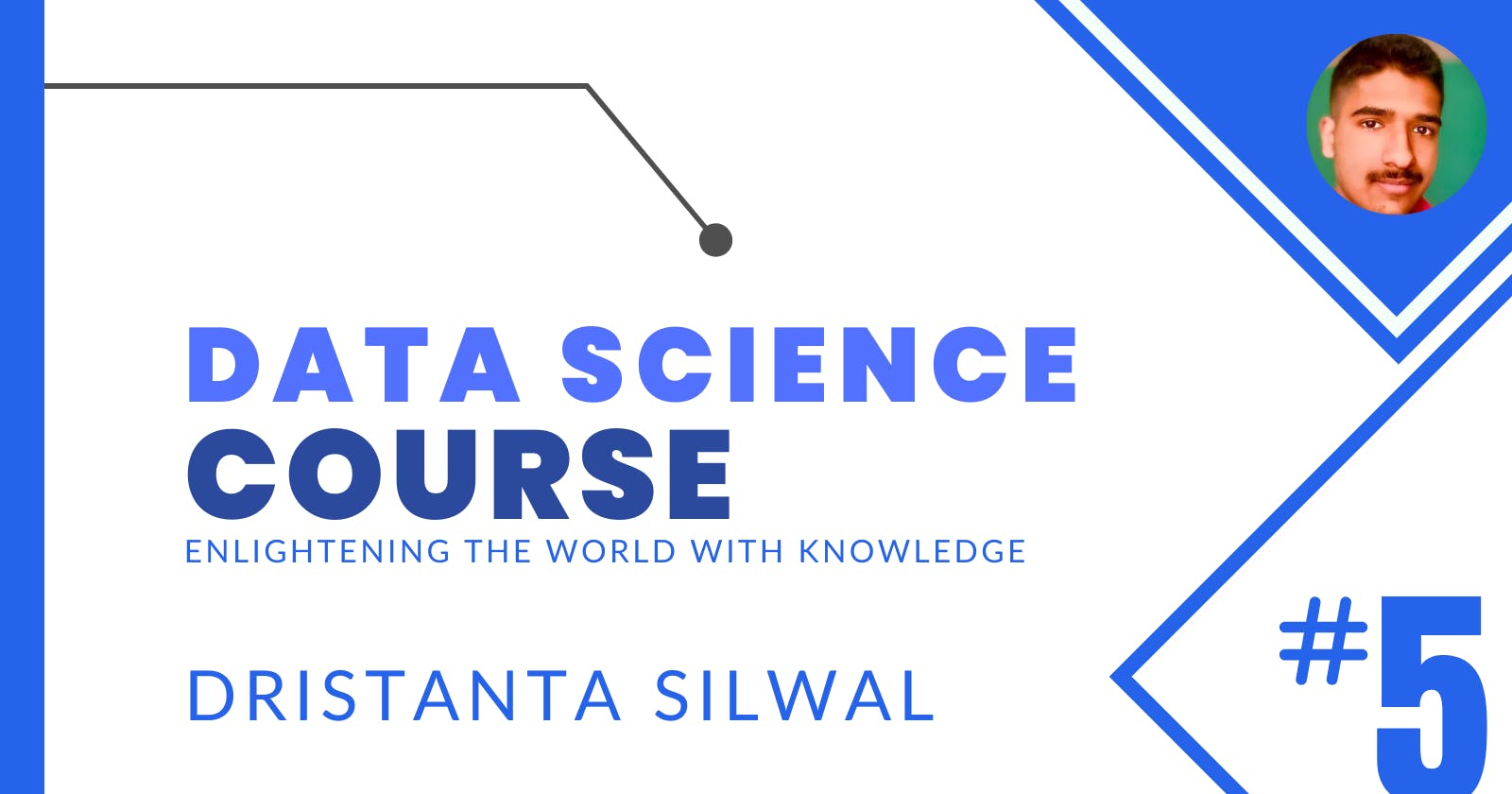Welcome back to Day 5 of our Data Science Foundational Course! In the previous blog post, we explored the essential techniques of data preprocessing. Today, we'll dive into the fascinating world of Machine Learning Algorithms. 🚀🔬
What is Machine Learning? 🤔🧠
Machine Learning is a subset of Artificial Intelligence that enables computers to learn and make predictions or decisions without being explicitly programmed. It involves developing algorithms and models that can automatically learn patterns and insights from data, allowing us to extract valuable information and make informed predictions or decisions.
Types of Machine Learning Algorithms 📈📉🤖
Machine Learning algorithms can be broadly categorized into three types:
Supervised Learning: In supervised learning, we train a model using labeled data, where each data point has a corresponding target or output value. The model learns to map the input features to the correct output based on the provided labels. Examples of supervised learning algorithms include Linear Regression, Decision Trees, Random Forests, and Support Vector Machines.
Unsupervised Learning: Unsupervised learning deals with unlabeled data, where there are no specific target variables. The goal is to uncover hidden patterns, structures, or relationships within the data. Clustering algorithms, such as K-means and Hierarchical Clustering, and Dimensionality Reduction techniques, like Principal Component Analysis (PCA) and t-SNE, are popular unsupervised learning algorithms.
Semi-Supervised Learning Semi-supervised learning combines elements of both supervised and unsupervised learning. It leverages a small amount of labeled data along with a larger pool of unlabeled data. The labeled data helps guide the learning process, while the unlabeled data aids in discovering patterns and improving model performance.
Applications of Machine Learning Algorithms 📊📈🔍
Machine Learning algorithms have diverse applications in various domains. Some common applications include:
Predictive Analytics: Machine Learning algorithms can be used for making predictions, such as forecasting sales, predicting customer churn, or estimating stock prices.
Image and Speech Recognition: Deep Learning algorithms, a subset of Machine Learning, have revolutionized image and speech recognition tasks, enabling applications like facial recognition, object detection, and speech-to-text conversion.
Natural Language Processing (NLP): NLP algorithms process and understand human language, enabling tasks like sentiment analysis, language translation, and chatbot development.
Recommendation Systems: Machine Learning algorithms power recommendation systems in e-commerce, streaming platforms, and social media, providing personalized recommendations based on user behavior and preferences.
Getting Started with Machine Learning in Python 🐍🤖💡
To begin your journey with Machine Learning in Python, you'll need to have the following libraries installed: NumPy, Pandas, and scikit-learn. These libraries provide essential tools and functions for data manipulation, model building, and evaluation.
Here's a simple example of how to train a Linear Regression model using scikit-learn:
import numpy as np
from sklearn.linear_model import LinearRegression
# Sample training data
X_train = np.array([[1], [2], [3], [4], [5]])
y_train = np.array([3, 4, 5, 6, 7])
# Create a Linear Regression model
model = LinearRegression()
# Train the model
model.fit(X_train, y_train)
# Make predictions
X_test = np.array([[6], [7]])
predictions = model.predict(X_test)
print(predictions)
In this example, we train a Linear Regression model to predict the output
variable y based on the input variable X. We then use the trained model to make predictions on new data points.
Conclusion 🎯🔑
Congratulations on completing Day 4 of our Data Science Foundational Course! Today, we explored the world of Machine Learning algorithms, including supervised learning, unsupervised learning, and semi-supervised learning. We also discussed various applications of Machine Learning in data science.
In the next blog post, we'll dive deeper into the evaluation and performance metrics of Machine Learning models, equipping you with the tools to assess and optimize your models effectively.
Keep learning, keep exploring the power of Machine Learning! 💪🤖🔬

